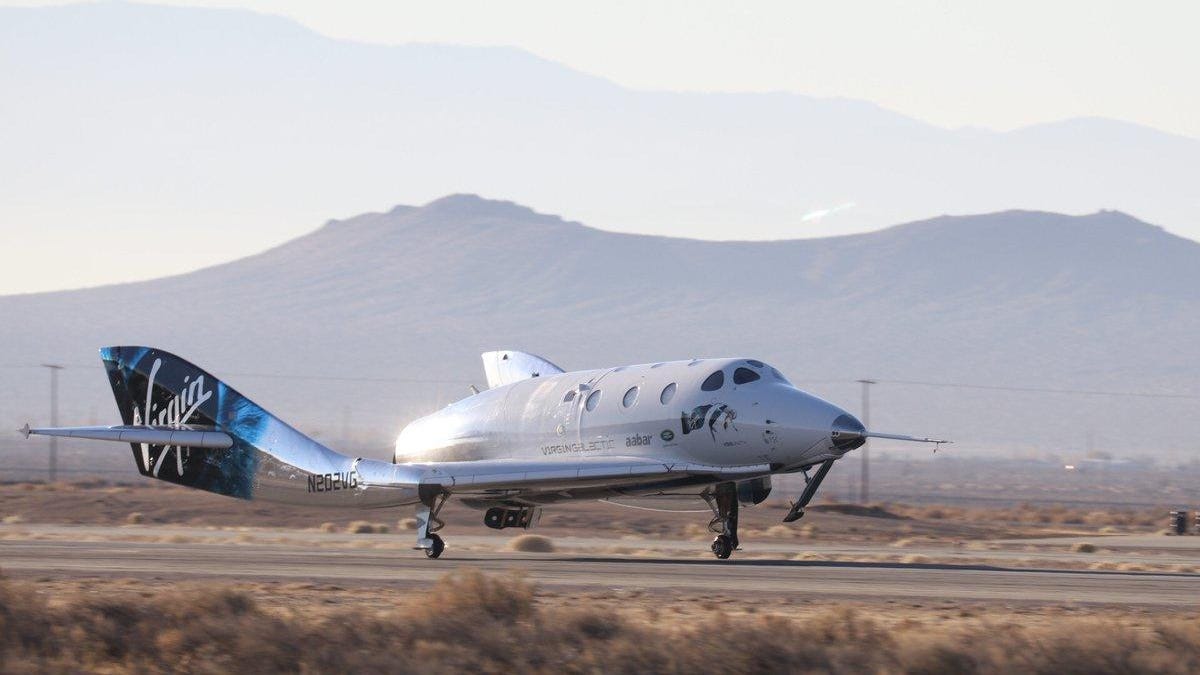Virgin Galactic plane skims space in historic human test flight
NASA congratulates Richard Branson and Virgin Galactic for a major milestone in the commercial space tourism race.
Richard Branson's commercial spaceflight company Virgin Galactic literally soared to new heights during a Thursday morning test flight of its rocket-powered SpaceShipTwo space plane. It returned safely to Earth after the flight.
Lovely shot of takeoff! WhiteKnightTwo and SpaceShipTwo take to the skies pic.twitter.com/JFcSDVB9jR
— Virgin Galactic (@virgingalactic) December 13, 2018
"SpaceShipTwo, welcome to space," the company tweeted during live coverage of the flight from the Mojave Air and Space Port in California. The space claim is a bit of a gray area.
SpaceShipTwo, named the VSS Unity, hitched a ride on Virgin Galactic's WhiteKnightTwo aircraft before separating and taking off under its own power. The winged spaceship reached 51.4 miles (82.7 kilometers) above the surface of Earth and achieved a speed of Mach 2.9. The rocket motor burned for 60 seconds.
NASA says space starts at roughly 62 miles (100 kilometers) above sea level, but SpaceShipTwo's pilots likely experienced microgravity during the journey.
Virgin Galactic can argue in favor of its claim to reaching space. The US Air Force awards astronaut wings to pilots who top the 50-mile mark.
The VSS Unity carried four NASA-sponsored experiments on board, including a vibration-isolation platform and an experiment that simulates how the dusty surface of an asteroid reacts to an impact in microgravity.
Virgin Galactic intends to eventually take space tourists on flights. Branson said in July he hopes to be one of the first passengers to go for a ride.
Thursday's test flight gives Virgin Galactic a step up in the private space-tourism race. Elon Musk's SpaceX has ambitious plans to carry passengers around the moon and Jeff Bezos' Blue Origin is conducting rocket tests, but both rival companies have yet to carry humans into space.
NASA tweeted its congratulations to Virgin Galactic for "successfully flying to suborbital space."
Congrats to @VirginGalactic on SpaceShipTwo successfully flying to suborbital space with our four @NASA_Technology payloads onboard. With a good rocket motor burn, the mission went beyond the 50-mile altitude target. Learn more about our tech onboard: https://t.co/CnVFu1eSQz https://t.co/D1AhE1Uzxm
— NASA (@NASA) December 13, 2018
This was Virgin Galactic's fourth powered test flight of SpaceShipTwo. "Overall the goal of this flight is to fly higher and faster than previous flights," Virgin Galactic said. Mission achieved.
First published Dec. 13 at 8:46 a.m. PT.
Update at 9:58 a.m. PT: Added NASA congratulations and background on space tourism.


